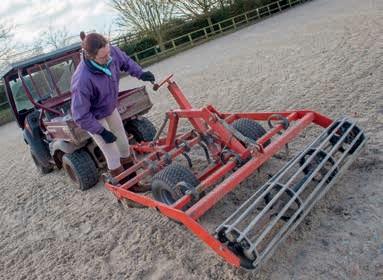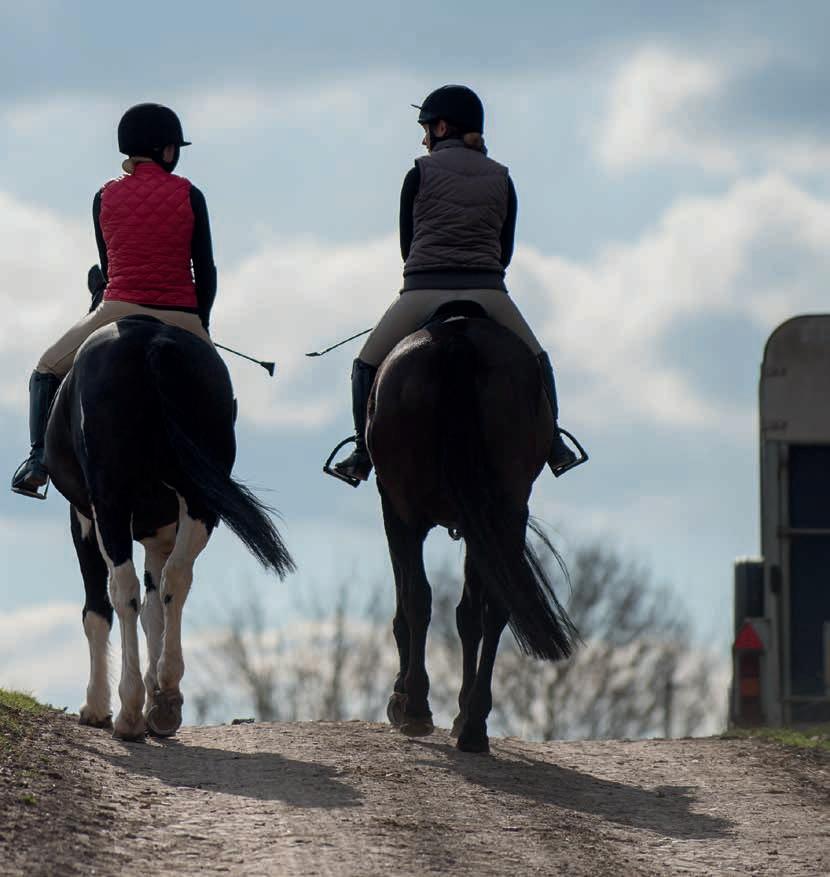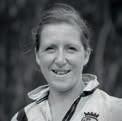

In this feature. . . Simple lateral exercises for suppleness




In this feature. . . Simple lateral exercises for suppleness

Does a horse have to be naturally bendy to succeed in dressage, or can he become more flexible through training? This month, Gareth Hughes talks suppleness
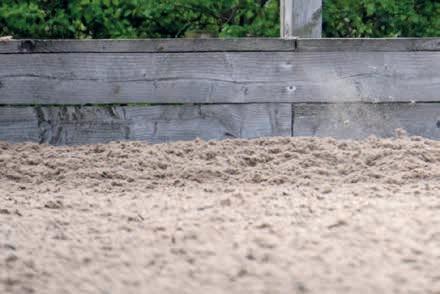
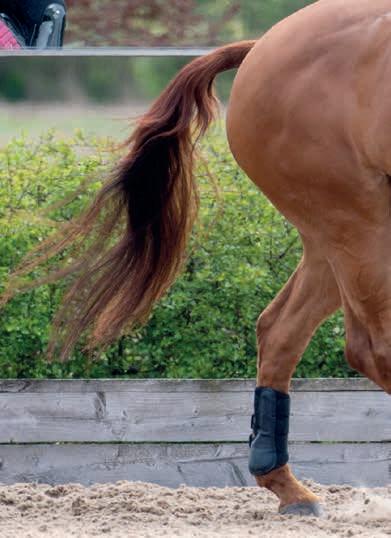
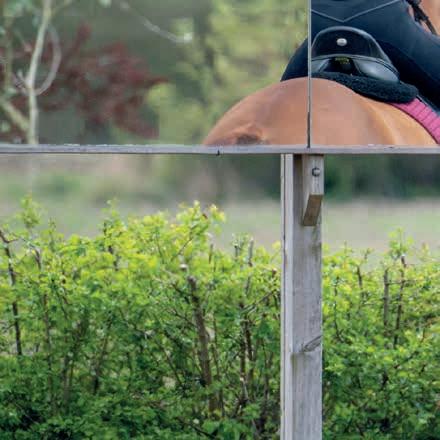
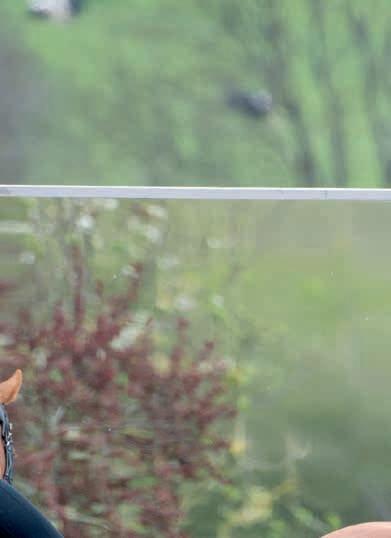
Everyone has a di erent idea of what suppleness looks like. For me, it’s when a horse is equally flexible on both sides and has a feeling of softness when I ask him to bend. It’s important to remember that every horse, like every human, will be sti er on one side of his body than the other, and some horses are naturally more flexible. Nevertheless, it doesn’t mean you can’t train your horse to become more supple through correct schooling.
In the second part of my series, I’m going to run through some simple but e ective exercises you can do with your horse at home to help encourage suppleness through his whole body. With repetition, your horse will start to feel more balanced and supple, and look more beautiful when he moves. Now, let’s get to it.
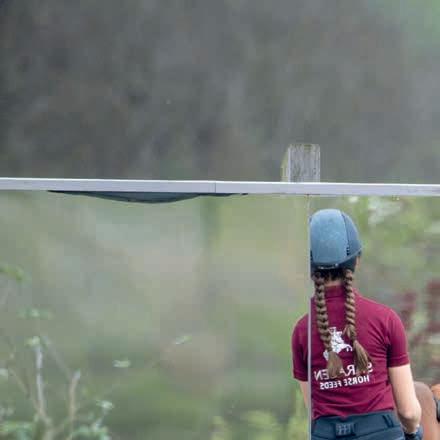

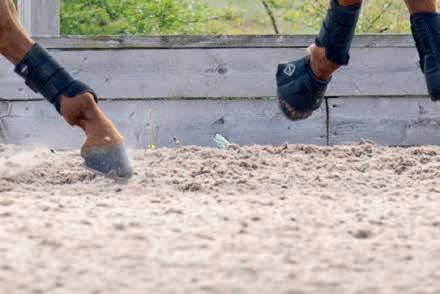
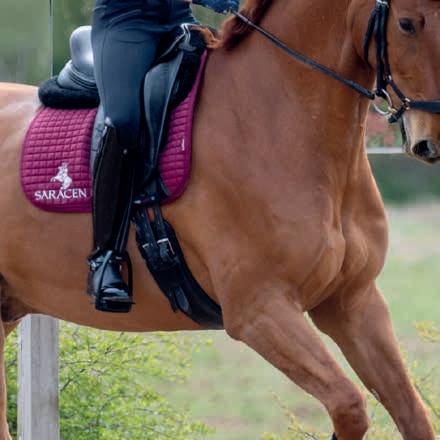
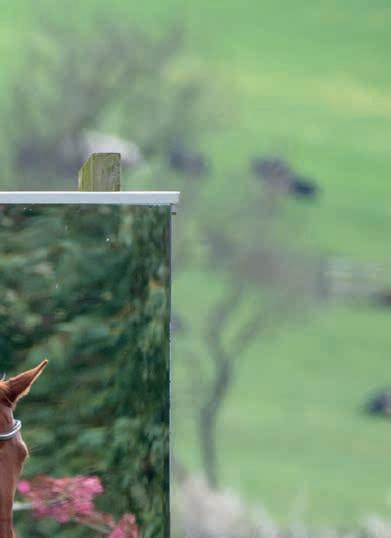
Gareth Hughes is an international dressage rider who’s represented Great Britain on numerous occasions. He’s the current British national dressage champion, and has two World Championship silver medals as well as a silver and bronze European medal to his credit. He was the travelling alternative for Tokyo 2020.

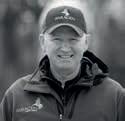
Ruby Hughes , aged 14, is one of Britain’s most exciting up-and-coming dressage riders, having represented her country on Pony teams.

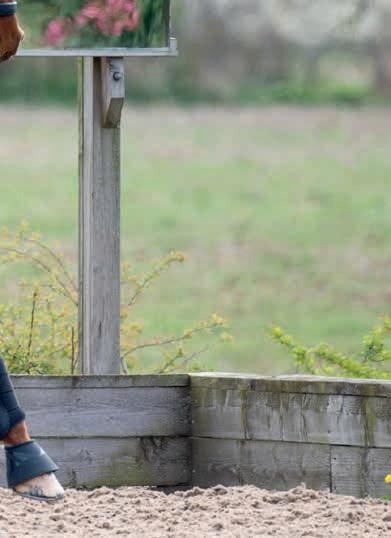
She rides Julia Hornig’s Classic Goldstrike, an 11-year-old gelding who’s competed successfully up to Inter I with Rebecca Hughes.
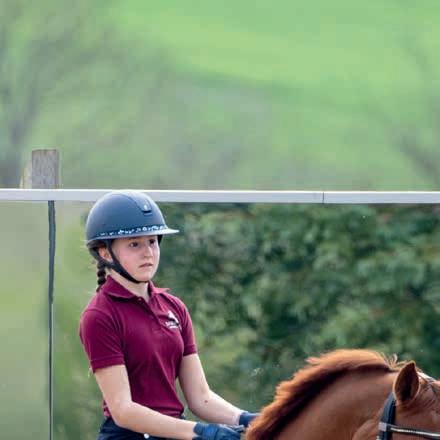
Your frame of mind will shape your horse’s mentality, so if he’s taking an extra look or spooking at his new surroundings, try to stay relaxed. You’d be surprised how much this will help him.
 As told to Rebecca Philpot.
As told to Rebecca Philpot.
Felicity Collins is an international eventer based in Sussex who regularly coaches riders of all ages and abilities. She’s represented Britain successfully on a number of occasions and made her five-star debut in 2021, finishing in the top 10.
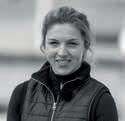
Esme Higgs is a popular social media personality and content creator. She rides eight-year-old Joey He’s a 16hh Thoroughbred x Warmblood all-rounder gelding who Esme’s owned since early 2020.
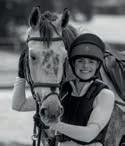
Wondering how to introduce your horse to arena cross-country? Eventer Felicity Collins explains how to structure your first session
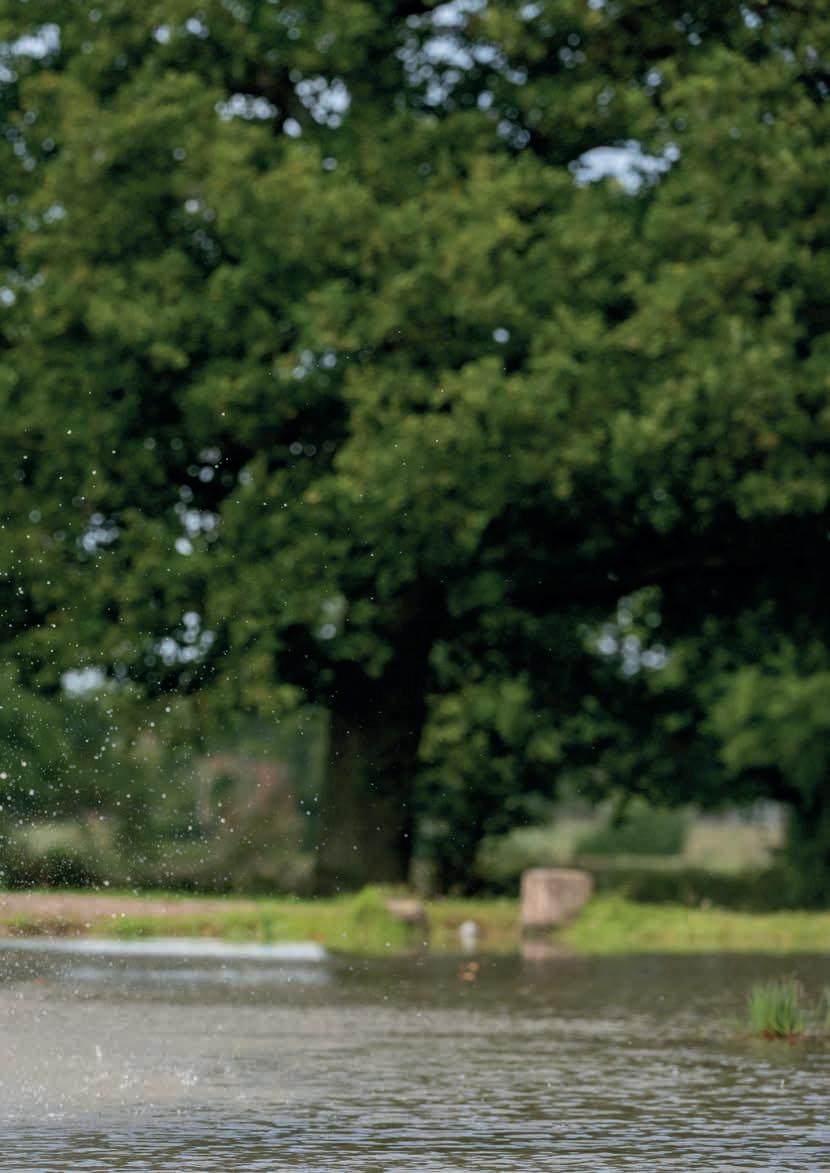
You’ve chosen your venue and put in the homework, so now it’s time to go for your first arena cross-country session. However, with so much to look at and so many things to introduce your horse to, it can be di cult to know where to start. Worry not – by following my tips, you’ll be on track for a fun-filled session.
You set the tone for the ride from the moment you unload your horse, so allow yourself plenty of time so you can get him ready in a calm manner. To have a productive session, it’s important your horse is relaxed – you’ll struggle to teach him anything if he’s stressed or distracted.
Factors to consider that might impact the time it takes to relax your horse include...
• how he’s stepped o the lorry Does he feel relaxed or is he slightly on edge? You might need to spend more time walking your horse around, in-hand and ridden, if he’s on his toes
• how busy it is This isn’t just limited to horses – are there lots of people around who are also hiring facilities, or maintenance work going on? This can distract your horse so they’re key things to be aware of as you structure your session
• what else there is to look at Are there banners up around the arena? What are the surroundings like? Where’s the lorry park? These are all questions you need to ask yourself, and remember it’s okay to stick to areas with the least distractions to start with Try not to put too much pressure on your horse – or yourself – to perform, particularly on your first visit. It might be that the most productive thing you achieve is getting your horse relaxed enough to warm up, work well and pop a few fences before calling it a day.
While we’re talking about setting the tone from the beginning, it’s important to praise your horse for any positive steps he makes. A quick scratch on the neck or a “good boy” when he gets it right is plenty. Entering a new arena, going past something spooky, responding to your aids – these are all behaviours worth recognising and rewarding.
Photos: Jon Stroud. With thanks to Stable Mind Yoga, stablemindyoga.co.uk
As told to Nicky Mo att.
Being more aware of your mind and body, and learning to listen to them, can be life changing both in and out of the saddle, says Kathryn Thakrar
Istrongly believe that regular yoga practice will keep us riding for longer by providing a more comfortable body and enabling the mind to be more focused. Yoga develops self-awareness of our body, such as where we carry imbalances, have areas of tension and where we need to gain strength and flexibility.
When we’re more aware of ourselves, our horses notice our presence (they also know when we’re not present) and, in turn, being aware of their energy helps us establish this connection by opening a channel of communication.
Kathryn Thakrar is a qualified yoga instructor who uses various techniques to help riders with their wellbeing, flexibility and fitness, enabling horse and rider to build a meaningful connection. She runs Stable Mind Yoga in Hertfordshire and owns her beloved Welsh section D gelding, Norman.
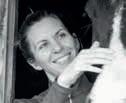
By exploring through the practice of yoga and meditation, we slow down, we notice and gain tools that can help our riding and, most importantly, we connect more e ectively with our horses.
Often, we’re so busy squeezing as much as we can into our days that our energy levels are raised and we feel stressed and pressured to get everything done. Our horses, on the other hand, may have been happily grazing with their friends in the field or munching hay in the stable and will, therefore, be experiencing contrasting energy.
Next time you arrive at the yard, spend a few moments checking in with yourself before you get out of your car. Ask yourself...
• where are my energy levels? Are they low or are you brimming with energy? Are you stressed or feeling flat? Do
By developing connection to our body we feel more and can feel and sense our horses better. Practising mindfulness and meditation helps to bring us to the present moment and that’s usually where horses are. Then the relationship with our beautiful friend can grow and become stronger. So where do we start?
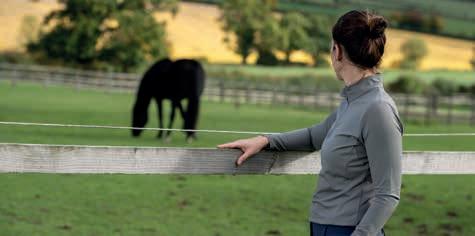
you have the feeling of needing to get lots done in the time available or can you go more slowly?
• how is my breath? Is it fast and shallow, long and deep, or are you holding your breath?
• how does my body feel? Scan your body for tension and bring awareness to your breath. By doing this, the breath starts to change, becoming smoother and steadier
A few moments of checking in like this can make all the di erence to how we are when we’re with our horses and, when we have a clearer mind, we often find things go smoother and we can get all our tasks done more e ectively.
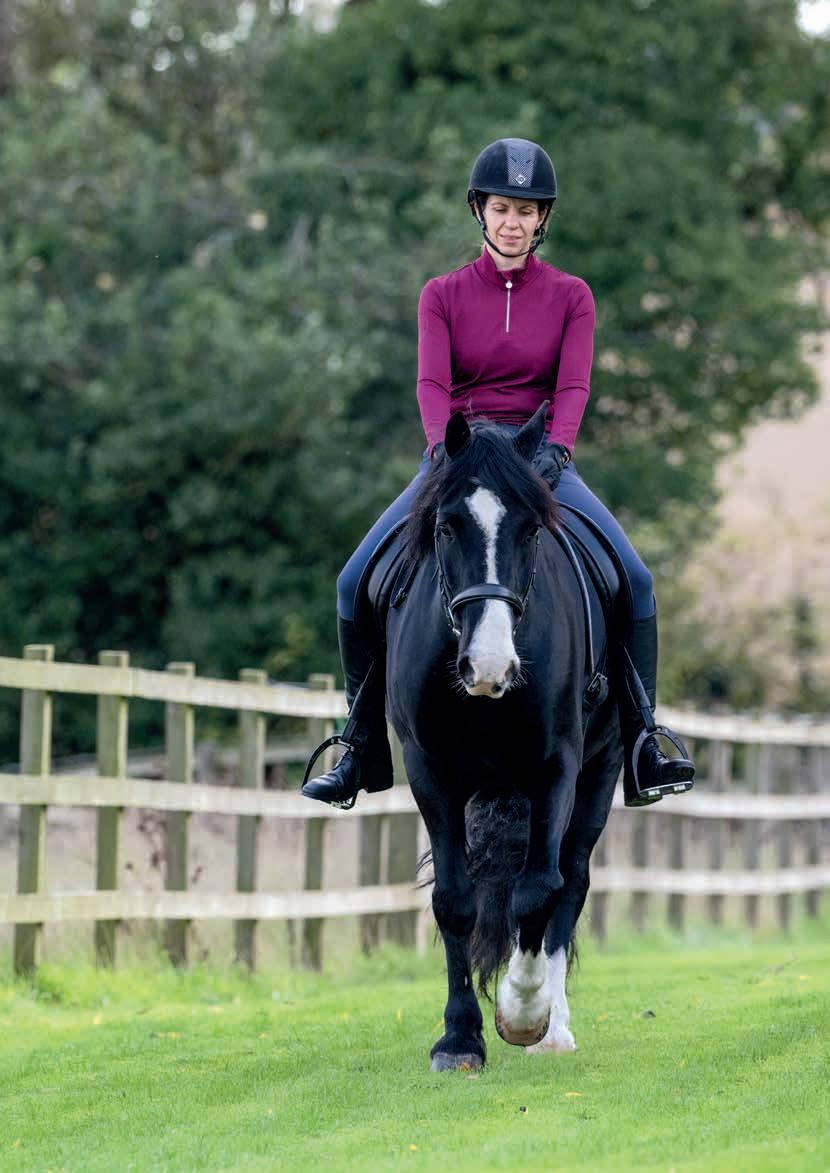
When we’re more aware of ourselves, our horses notice our presence
It might be chilly out there but winter can provide the perfect opportunity to enjoy your horse. Fizz Tickridge-Marshall explains how
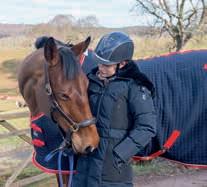
We’ve passed the shortest day and might now feel we’ve turned the corner towards spring, but, before that, ahead of us there are still a couple of months of wintry weather to get through. By this point, we could be forgiven for being fed up with the darkness, the rain, the cold and the general gloom but, really, rather than feeling we’re at the mercy of the elements, we should embrace this time of year and use it to our advantage.
Winter might seem to be nothing other than frozen taps, muddy fields, extra hay rations and endless rugging, but it doesn’t have to be all bad news because you can, in fact, use this di cult season productively and even learn to love it.
In contrast to summer, when we’re busy preparing for and going to competitions or concentrating on improving our horses to reach our next goal, winter can provide the chance to take a step back, release the pressure and embrace a more relaxed approach to horse ownership.
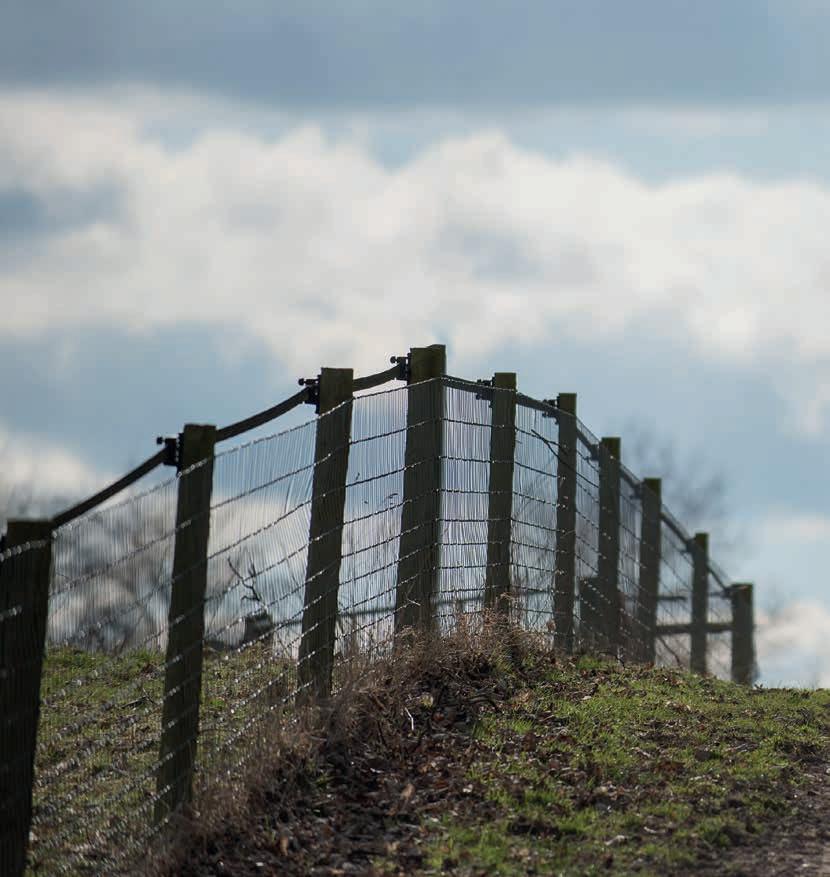
In the past, competition horses would traditionally have had an extended holiday over the winter, just as hunters would have had in the summer months, and this is still the case for some. But, these days, many sport horses now work year-round with short holiday intervals popped in whenever there are suitable gaps in their schedules. We, however, do not have to follow that pattern.
Although the greater availability of indoor venues we have now makes competing throughout the year possible, winter can also o er a chance for you and your horse to unwind a little.
From taking time over clipping to pottering about on the yard, winter brings the opportunity for a little more one-to-one contact with your horse, especially if he’s out around the clock during the summer.
Photos: Jon StroudEven if you don’t have the time or the daylight hours to ride every day in the winter, there are things you can be doing that will pay you back in the long term. Doing some maintenance on your arena is a good example of this, especially when there’s more moisture in the surface following a rainy spell. Giving your tack some TLC, taking it apart and oiling the various individual pieces, is also worth your time and a good job to do when the weather’s against you.
